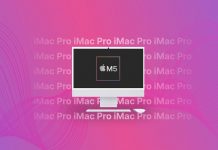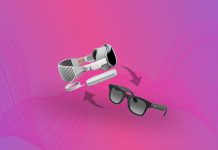
Just when everyone kept their eyes glued to iOS 26 beta 2 and counted down the days to the iPhone 17 launch, Apple fans got hit with a plot twist. Out of nowhere, a new conversation started to bubble up – not about software tweaks or camera upgrades, but about something that sounds like it came straight from a sci-fi script: Apple’s smart glasses.
On June 30, analyst Ming-Chi Kuo decided to drop a roadmap stretching from 2025 to 2028, outlining Apple’s upcoming lineup of XR headsets and smart glasses. For those unfamiliar, Kuo isn’t just some guy with a Twitter account and opinions, he builds his predictions off supply-chain intelligence, which, in Apple’s world, basically means he sees things months (sometimes years) before the rest of us do.
So, while Apple hasn’t said a word officially, Kuo’s track record convinced us to take a look at this roadmap. If even half of it holds up, Apple’s next big thing might not sit in your pocket, it might sit on your face.
Table of Contents
Ming-Chi Kuo Roadmap Highlights
Before Apple steps onto the stage with a pair of smart glasses that actually show something on the lenses, other brands plan to jump in first. According to Ming-Chi Kuo, several companies will try to grab attention early by releasing their own versions. Still, unless people suddenly decide to wear clunky prototypes in public, most of those glasses will stay on the sidelines for at least another two years.
In the meantime, Kuo claims Apple currently has no fewer than seven hardware projects. That includes three devices in the Vision lineup and four smart glasses models – five of them already have internal timelines, while two still sit in limbo.
So what exactly is in the pipeline? Here’s a breakdown of what Kuo says we should expect if Apple sticks to the plan:
2025
Apple refreshes the Vision Pro with a new M5 chip, that’s it (no new design, no lighter frame, no lower price). According to Kuo, production volume will range between 150,000 and 200,000 units, which keeps it in limited-edition territory.

2026
Apple does not plan to release any new Vision or smart glasses products this year. Kuo confirms the gap. Consider it the calm before the real rollout begins.
2027
Apple will launch its first smart glasses without a display. These glasses will resemble traditional eyewear but include AI-driven features, voice control, gesture recognition, and support for basic photography and video recording. Shipments are expected to hit 3 to 5 million units in the first year.
Also scheduled for 2027 is the Vision Air, a more affordable and lightweight version of the Vision Pro. This model will use a plastic and magnesium alloy frame to reduce weight by about 40%. It will feature fewer sensors and run on a chip similar to those used in iPhones, not Macs.

2028
Now things heat up. Apple may unveil two major products: a second-generation Vision Pro and its first smart glasses with an actual display.
The new Vision Pro gets a redesign, cuts the weight, and probably shaves off a few hundred bucks, though it will still cost more than a round-trip flight to Tokyo. In the same year, Apple will release its first pair of smart glasses with an integrated display. These will use waveguide optics (LCoS-based) and support gesture and voice interaction. Kuo also mentions a second display-equipped model in development, but the production timeline remains unknown.

Apple previously explored a separate micro-OLED “display accessory” for iPhone and Mac, but the project was paused. Kuo suggests it faced weight issues and lacked a clear market angle.
It’s Not All Glasses! Apple Plans a Cheaper MacBook Too
While most attention went to the headset roadmap, Kuo also dropped a new article on X (yes, it’s still Twitter) and casually mentioned that Apple has a new 13-inch MacBook in the works.
— 郭明錤 (Ming-Chi Kuo) (@mingchikuo) June 30, 2025
This new model won’t aim at power users or professionals, it will target price-conscious buyers who want a Mac but would rather not sacrifice rent for it. Kuo says the machine will rely on an A18 Pro chip, the same processor Apple plans to use in this year’s iPhone 16 Pro. If true, it would make this the first MacBook powered by an iPhone-class chip instead of the usual Mac silicon.
The company plans to kick off mass production in late 2025 or early 2026. Volume estimates land somewhere between five and seven million units in the first year, which suggests a price that falls well below the current $999 MacBook Air. The device may also launch in four colors: silver, blue, pink, and yellow (a more colorful lineup than usual).

Apple hasn’t confirmed anything, of course. But if this machine hits the market, it could create a new budget tier for MacBooks, one powered by a phone chip, dressed in cheerful colors, and clearly built to sell in bulk. It might not scream performance, but it’ll check enough boxes for most users, especially the ones who use Safari, Notes, and three Chrome tabs.
Final Thoughts
Well, that wraps it up for now. The information isn’t extensive, but it paints an interesting picture. Apple clearly polishes what already sells, and it quietly expands into categories that most people wouldn’t even associate with the brand at first glance. Smart glasses don’t top the list when someone hears “Apple,” yet the company appears to treat them as a serious long-term bet.
We found it genuinely curious to go through Ming-Chi Kuo’s roadmap. Hopefully, you did too. His predictions don’t always hit 100%, but they come close enough to pay attention. And if this one follows the usual pattern, we’ll see a new MacBook hit shelves before long, followed by glasses that might actually make sense to wear in public.






